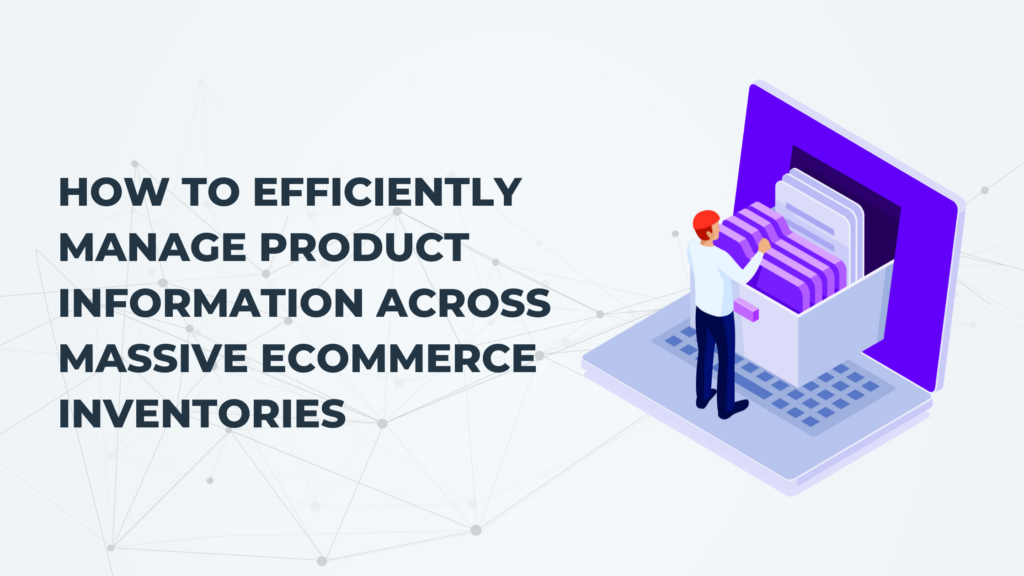How to Create a Dropshipping Store on Squarespace?
Creating a dropshipping store on Squarespace is a great way to start an online business with minimal upfront costs. Squarespace is a user-friendly platform that allows you to design a professional storefront without any coding skills. With dropshipping, you can sell products without holding any inventory, as your supplier handles storage and shipping.
This blog will walk you through the steps to set up a successful Squarespace dropshipping store, choose the right suppliers, and optimize your business for growth. By understanding the essentials of Squarespace and dropshipping, you can create a seamless and profitable online store.
Step-by-Step Guide to Setting Up a Dropshipping Store on Squarespace
Overview of Squarespace and Dropshipping
- Squarespace is a popular website builder that lets you create a professional online store without coding.
- Dropshipping is a business model where you sell products without holding inventory; instead, your supplier ships products directly to your customers.
- Combining Squarespace and dropshipping allows you to create a seamless ecommerce experience.
Creating a Squarespace Account
- Visit the Squarespace website and click “Get Started.”
- Choose a plan that fits your needs (e.g., Business or Commerce plans are suitable for dropshipping).
- Sign up with your email address and create a password.
- Confirm your account through the email verification link sent by Squarespace.
Selecting a Template Suitable for Dropshipping
- Browse Squarespace’s templates and choose one designed for ecommerce.
- Consider templates with clean layouts and easy navigation to enhance user experience.
- Click on “Start with [Sample Template]” to begin customizing your store.
Setting up Store Pages and Navigation
- Add essential pages like Home, Shop, About Us, and Contact Us.
- Use the “Pages” tab in the Squarespace editor to create and organize these pages.
- Ensure your navigation menu is clear and user-friendly, helping customers find products easily.
Configuring Store Settings and Domain
- In the “Commerce” tab, set up your store settings, including payment methods, shipping options, and tax settings.
- Connect a domain to make your store easily accessible (either purchase a new domain or connect an existing one).
- Customize your store’s appearance and functionality through the “Design” and “Settings” tabs.
- Review and test your store to ensure everything works correctly before launching.
Choosing the Best Dropshipping Suppliers for Your Squarespace Store
Finding reliable dropshipping suppliers is crucial for the success of your Squarespace dropshipping store. Reliable suppliers ensure timely delivery, quality products, and efficient customer service. To identify such suppliers, look for those with positive reviews, a good reputation, and transparent policies. Check online forums, review sites, and dropshipping communities for recommendations. It’s also beneficial to test the suppliers by ordering samples to assess their product quality and delivery time.
Comparing Supplier Terms and Conditions
- Product Range – Ensure the supplier offers a variety of products that fit your store’s niche.
- Pricing and Fees – Compare product prices, shipping costs, and any additional fees like membership or dropshipping fees.
- Shipping Policies – Check the shipping methods, delivery times, and costs to ensure they align with your customer’s expectations.
- Return and Refund Policies – Understand the supplier’s policies on returns and refunds to handle customer issues smoothly.
- Minimum Order Requirements – Some suppliers require a minimum order amount. Make sure this fits with your business model.
Integrating Suppliers With Squarespace
- Automated Integration – Use plugins or apps that integrate supplier catalogs directly into your Squarespace store.
- Manual Integration – If automated options aren’t available, manually upload product details, images, and prices to your Squarespace store.
- Inventory Syncing – Ensure that the inventory levels between your supplier and your store are synchronized to avoid selling out-of-stock items.
Best Practices for Supplier Communication
- Regular Updates – Maintain regular communication with your suppliers to stay updated on stock levels, new products, and any potential issues.
- Clear Expectations – Clearly outline your expectations regarding delivery times, product quality, and customer service.
- Build Relationships – Foster a good working relationship by being professional, respectful, and understanding. Strong relationships can lead to better terms and faster resolutions to problems.
- Feedback Loop – Provide feedback on any issues or successes to help suppliers improve their services and support your business better.
Essential Plugins for Enhancing Your Squarespace Dropshipping Business
Plugins are crucial tools that enhance the functionality of your Squarespace dropshipping store. These plugins can help automate tasks, improve your store’s performance, and provide better customer experiences. For a successful dropshipping business on Squarespace, it’s important to use plugins that cater to inventory management, order processing, SEO, analytics, and customer engagement.
Installing and Configuring Dropshipping Plugins
Identify the Needed Plugins – Determine which plugins will best support your dropshipping needs, such as inventory management and order processing tools.
Install Plugins – Follow the instructions provided by the plugin developers to install them on your Squarespace site. This often involves copying and pasting code or using a third-party integration.
Configure Settings – Adjust the plugin settings to match your business needs. This may include syncing your inventory with suppliers, setting up automatic order processing, and configuring notifications.
Plugins for SEO, Analytics, and Customer Engagement
SEO Plugins – Enhance your store’s visibility on search engines by using SEO plugins that help with keyword optimization, meta tags, and site performance.
Analytics Plugins – Track your store’s performance with analytics plugins that provide insights into visitor behavior, sales trends, and conversion rates. This helps in making data-driven decisions.
Customer Engagement Plugins – Boost customer interaction with plugins that offer live chat support, email marketing automation, and customer reviews. These tools can improve customer satisfaction and increase repeat business.
Designing an Attractive Dropshipping Storefront on Squarespace
Importance of a Professional Storefront
A professional storefront is crucial for success in Squarespace dropshipping. It helps build trust with customers, making them more likely to purchase from your store. A clean, well-designed storefront shows that you are serious about your business and committed to providing a great shopping experience. This can significantly improve your conversion rates and customer retention.
Customizing Your Template
- Choose the Right Template – Select a Squarespace template that suits your dropshipping niche and allows for easy customization.
- Personalize the Design – Customize colors, fonts, and layout to match your brand identity.
- Add Essential Pages – Include pages like Home, Shop, About Us, Contact, and FAQ to provide comprehensive information to your visitors.
Adding High-quality Product Images and Descriptions
- High-Quality Images – Use high-resolution images that clearly show your products. This helps customers see details and builds trust.
- Detailed Descriptions – Write clear and detailed product descriptions, including features, benefits, and specifications. This helps customers make informed decisions.
Ensuring Mobile Responsiveness
With many customers shopping on their mobile devices, it’s essential that your Squarespace dropshipping store is mobile-friendly. A responsive design ensures that your store looks great and functions well on all screen sizes. This improves user experience and can lead to higher sales, as mobile shoppers can navigate and purchase easily.
Tips for Managing Inventory in Your Squarespace Dropshipping Store
Inventory Management Best Practices
- Keep Product Listings Updated – Regularly update your product listings to ensure accuracy in stock levels, descriptions, and pricing.
- Organize Your Products – Categorize products clearly to make it easy for customers to find what they need.
- Monitor Stock Levels – Frequently check stock levels to avoid overselling or stockouts.
- Set Reorder Points – Establish minimum stock levels to prompt timely reorders.
Using Automation Tools to Track Inventory
- Inventory Management Software – Use software to automatically track stock levels, sales, and reorders.
- Real-Time Updates – Ensure your inventory management system provides real-time updates to avoid discrepancies.
- Integration with Suppliers – Choose tools that integrate seamlessly with your suppliers to streamline inventory tracking.
Syncing Inventory With Suppliers
Syncing inventory with suppliers is crucial for effective Squarespace dropshipping. Regularly communicate with your suppliers to ensure accurate stock levels are reflected in your store. Utilize dropshipping plugins that automatically update inventory based on supplier data. This reduces manual work and minimizes the risk of selling items that are out of stock.
Handling Out-of-stock Items
Handling out-of-stock items efficiently is key to maintaining customer satisfaction in Squarespace and dropshipping. When a product goes out of stock, immediately update your store to reflect this. Offer alternative products or provide an estimated restock date. Communicate clearly with customers about any delays and offer solutions like backorders or refunds to maintain trust and satisfaction.
Marketing Strategies to Drive Traffic to Your Squarespace Dropshipping Store
SEO Strategies for Squarespace Dropshipping Stores
- Optimize Your Product Titles and Descriptions – Use relevant keywords in your product titles and descriptions to make them more searchable.
- Use Alt Text for Images – Add descriptive alt text to your product images, helping them appear in search engine results.
- Create a Blog – Write blog posts related to your products and industry to attract more visitors and improve your search rankings.
- Internal Linking – Link to other pages within your store to help search engines understand the structure of your site.
- Mobile Optimization – Ensure your site is mobile-friendly as search engines favor mobile-optimized websites.
Utilizing Social Media Marketing
Social media platforms are powerful tools for promoting your Squarespace dropshipping store. Create engaging posts about your products, share customer testimonials, and use hashtags relevant to your niche. Platforms like Instagram, Facebook, and Pinterest are particularly effective for visual products. Consistently posting and interacting with followers helps build a loyal customer base and drive traffic to your store.
Email Marketing Campaigns
Email marketing is an excellent way to keep your customers informed and engaged. Collect email addresses through sign-up forms on your website. Send out regular newsletters featuring new products, promotions, and exclusive discounts. Personalized emails can significantly increase customer retention and repeat sales for your Squarespace dropshipping store.
Paid Advertising Options
Paid advertising can give your dropshipping store a quick traffic boost. Consider using Google Ads to target specific keywords related to your products. Social media ads on platforms like Facebook and Instagram can also be highly effective. These ads can be tailored to reach your ideal customers based on demographics and interests, ensuring that your marketing budget is spent efficiently.
How to Handle Customer Service for Your Squarespace Dropshipping Business
Setting Up Customer Service Channels
Setting up customer service channels is essential for your Squarespace dropshipping store. Start by creating a dedicated email address for customer inquiries. You can also use live chat tools available on Squarespace to offer instant support. Make sure to include a contact form on your website for easy communication.
Responding to Customer Inquiries Promptly
Responding to customer inquiries promptly is crucial. Aim to reply to all emails and messages within 24 hours. Quick responses show customers that you value their time and are committed to providing excellent service. Use automated replies to acknowledge receipt of inquiries and set expectations for response times.
Managing Returns and Refunds
Managing returns and refunds effectively is vital for maintaining customer satisfaction. Clearly outline your return and refund policies on your Squarespace dropshipping store. Make the process easy for customers by providing return labels and clear instructions. Handle refunds quickly to avoid dissatisfaction and negative reviews.
Building Customer Trust and Loyalty
Building customer trust and loyalty is essential for long-term success in Squarespace dropshipping. Provide accurate product descriptions and high-quality images. Keep customers informed about their order status through regular updates. Encourage reviews and testimonials to build credibility. Offering exceptional customer service will turn one-time buyers into repeat customers.
Common Mistakes to Avoid When Starting a Dropshipping Store on Squarespace
Avoiding Niche Selection Mistakes
- Research Thoroughly – Choose a niche with high demand but low competition. Avoid overly saturated markets.
- Understand Your Audience – Ensure there is a target audience for your niche. Research their preferences and needs.
- Passion vs. Profit – Balance personal interest in the niche with its profitability. Avoid niches just because they seem popular.
Ensuring Supplier Reliability
A reliable supplier is crucial for your Squarespace dropshipping success. Verify their credibility by checking reviews and ratings. Test their delivery times and product quality by ordering samples. Establish clear communication channels to resolve issues quickly. Reliable suppliers help maintain customer satisfaction and reduce potential problems.
Preventing Common Setup Errors
- Optimize Your Store – Ensure your Squarespace store is user-friendly and visually appealing. Test all links and navigation.
- Set Up Proper Payment Gateways – Ensure secure and easy payment options for customers.
- Mobile Responsiveness – Make sure your store looks good and functions well on mobile devices.
Staying Compliant With Ecommerce Regulations
Compliance with ecommerce regulations is essential for any Squarespace and dropshipping business. Familiarize yourself with the legal requirements for online selling, including tax laws, data protection, and customer rights. Ensure your store’s policies are clear and accessible to customers. Staying compliant avoids legal issues and builds trust with your customers.
Integrating Payment Gateways for Your Squarespace Dropshipping Store
When setting up your Squarespace dropshipping store, selecting the right payment gateway is crucial. Popular options include PayPal, Stripe, Square, and others. Each gateway has its own fee structure, integration process, and supported currencies, so choose one that aligns with your business needs and target audience.
Setting Up and Configuring Payment Gateways
- Access your Squarespace account and navigate to the payment settings.
- Connect your chosen payment gateway by entering the required information.
- Configure settings such as currency, payment methods, and checkout customization.
Ensuring Secure Transactions
- Enable SSL (Secure Sockets Layer) for encrypted data transmission.
- Comply with PCI DSS (Payment Card Industry Data Security Standard) requirements.
- Educate customers on secure online shopping practices.
Handling Payment Disputes and Issues
Despite precautions, disputes may occur, such as chargebacks or payment failures. Promptly address customer inquiries and disputes through your payment gateway’s resolution process. Maintain clear communication with customers, provide receipts and transaction details as needed, and work towards fair resolutions to preserve customer satisfaction and trust in your Squarespace dropshipping business.
Conclusion
Creating a dropshipping store on Squarespace can be a rewarding venture for aspiring entrepreneurs. By leveraging Squarespace’s intuitive platform and integrating reliable dropshipping suppliers, you can build a professional online store with minimal upfront investment. Ensure your store stands out by designing an attractive storefront, optimizing for search engines, and implementing effective marketing strategies.
Manage inventory efficiently and prioritize excellent customer service to build trust and loyalty. Avoid common pitfalls and continuously refine your store based on customer feedback and market trends. With Squarespace’s tools and your dedication, you can create a successful dropshipping business that thrives in the competitive ecommerce landscape.



